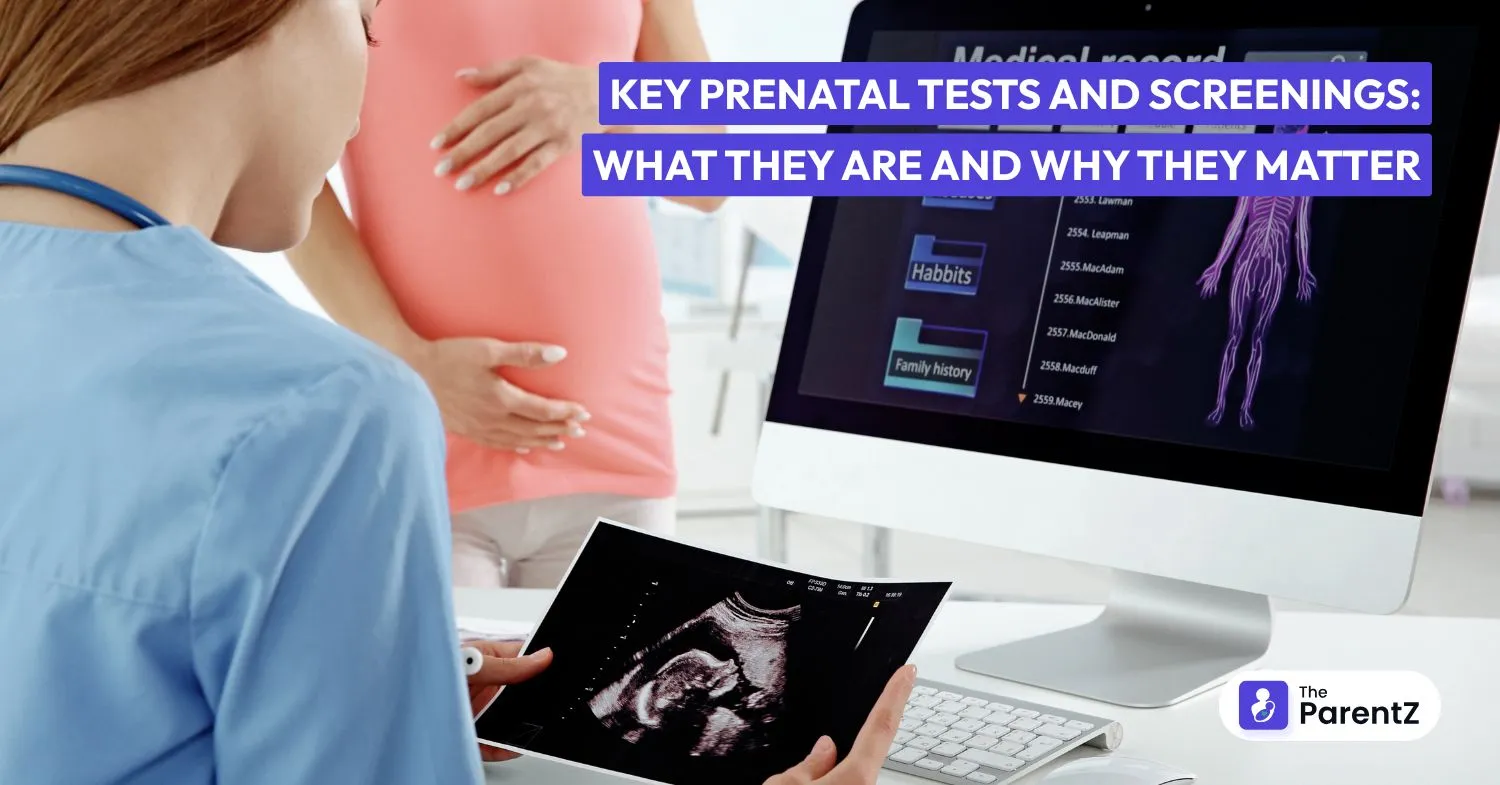The moment you see those two lines on a pregnancy test, your world begins to change. Alongside joy and anticipation come a series of decisions and checkups designed to keep you and your baby safe. Among them? Prenatal tests and screenings—some of the most important tools in modern obstetric care.
But what exactly do these tests look for? Are they all necessary? And how do they support a healthy pregnancy?
Whether you’re newly pregnant or preparing for your first prenatal appointment, understanding the purpose and timing of key prenatal tests can help you feel informed, empowered, and more at ease during your journey.
Why Prenatal Testing Matters
Prenatal testing is not just about identifying problems—it’s about gathering information. These tests help:
- Confirm the pregnancy and due date
- Monitor your baby’s growth and development
- Identify certain genetic or chromosomal conditions
- Detect potential complications early
- Ensure both you and your baby receive timely, appropriate care
Many tests are routine and low-risk. Some are optional, and your provider will guide you through the options based on your health history, preferences, and individual risk factors.
Types of Prenatal Testing
Prenatal testing typically falls into two main categories:
1. Screening Tests
These tests estimate the likelihood that your baby has certain conditions. They do not provide a definitive diagnosis but can indicate whether further testing is needed.
2. Diagnostic Tests
These tests confirm or rule out specific conditions. They are typically more accurate but may carry a slightly higher risk, especially if they involve invasive procedures.
Early Pregnancy Tests (Weeks 4–10)
Blood Tests and Initial Labs
Early on, your provider will take blood samples to check:
- Blood type and Rh factor
- Hemoglobin levels (to screen for anemia)
- Immunity to certain infections (like rubella and chickenpox)
- HIV, hepatitis B, and syphilis screening
- Thyroid function, if indicated
- Urinalysis (to check for infections or high protein levels)
These tests establish your baseline health and identify any conditions that may need monitoring during pregnancy.
Ultrasound for Dating the Pregnancy
Often done between 6 and 9 weeks, this early ultrasound:
- Confirms the pregnancy
- Checks for a heartbeat
- Estimates your due date
- Rules out ectopic pregnancy or multiple gestation
First Trimester Screenings (Weeks 10–13)
Non-Invasive Prenatal Testing (NIPT)
A simple blood test that analyzes tiny fragments of your baby’s DNA found in your bloodstream. NIPT screens for:
- Down syndrome (trisomy 21)
- Trisomy 18 and 13
- Sex chromosome abnormalities
- Baby’s sex, if desired
This test is highly accurate and has no risk to the baby.
First Trimester Combined Screening
Includes:
- A blood test (to measure pregnancy-related hormones)
- A nuchal translucency ultrasound (measuring fluid at the back of the baby’s neck)
Used together, these can estimate the risk of chromosomal abnormalities. While safe, these are screening—not diagnostic—tools.
Second Trimester Screenings (Weeks 15–22)
Maternal Serum Quad Screen
This blood test measures four substances related to pregnancy and screens for:
- Neural tube defects (like spina bifida)
- Down syndrome
- Trisomy 18
Not all providers offer this if you’ve already done NIPT or first-trimester screening.
Anatomy Scan (Mid-Pregnancy Ultrasound)
Typically done between 18–22 weeks, this detailed ultrasound checks:
- Baby’s organs, spine, brain, limbs, and face
- Placenta placement
- Amniotic fluid levels
- Baby’s growth and position
This is one of the most exciting and informative scans—it’s often when you can see your baby in detail and sometimes find out the sex.
Diagnostic Testing (If Needed)
Some parents opt for or are offered diagnostic testing based on screening results, age, or family history.
Chorionic Villus Sampling (CVS)
Performed between 10–13 weeks, CVS involves taking a small sample of placental tissue to test for genetic and chromosomal conditions.
- Accurate and definitive
- Slight risk of miscarriage (<1%)
Amniocentesis
Usually done between 15–20 weeks, this test involves collecting amniotic fluid to diagnose:
- Chromosomal disorders
- Neural tube defects
- Genetic diseases
While highly accurate, it also carries a small risk of complications.
These tests are optional, and decisions about them should be made in collaboration with your healthcare provider, based on your values and risk tolerance.
Additional Tests in the Third Trimester
Glucose Screening (24–28 Weeks)
This test checks for gestational diabetes, a temporary condition that can affect your baby’s growth and delivery.
If the initial glucose screening shows elevated levels, a second glucose tolerance test may follow for a clearer diagnosis.
Group B Strep (GBS) Test (35–37 Weeks)
A swab of the vagina and rectum tests for Group B Streptococcus, a common bacteria that can be passed to the baby during birth. If positive, antibiotics are given during labor to reduce the risk of newborn infection.
Fetal Monitoring (as Needed)
If you have risk factors (e.g., high blood pressure, diabetes, or decreased fetal movement), your provider may recommend:
- Non-Stress Tests (NST) to monitor baby’s heart rate
- Biophysical Profiles (BPP), a detailed ultrasound with heart rate tracking
Emotional Aspects of Prenatal Testing
Testing can bring peace of mind, but it can also spark worry or uncertainty, especially if you’re awaiting results or facing complex choices.
It’s okay to feel nervous. Prenatal testing is not just medical, it’s emotional and deeply personal. Talk openly with your provider, ask questions, and don’t hesitate to involve a genetic counselor if you need extra support.
Remember: information is power, not pressure. The goal is always to help you make informed choices that feel right for you and your family.
Conclusion: Informed, Supported, and Prepared
Prenatal testing is an essential part of modern pregnancy care, offering insight into your baby’s development and giving you the chance to plan ahead—both medically and emotionally.
While the number of tests can feel overwhelming at times, each one serves a specific purpose and is offered with your and your baby’s well-being in mind. Many are optional, and none should be approached with fear.
With a trusted healthcare provider by your side, you’ll have the guidance you need to navigate each step with clarity and calm. Your pregnancy is unique, and so is your path through it.








Be the first one to comment on this story.